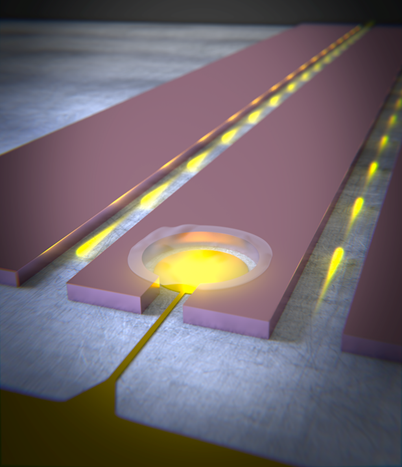Scientists from TU Delft’s Kavli Institute of Nanoscience were able to detect extremely small changes in forces on graphene. They believe they can make nano-electro-mechanical devices of graphene that could one day be used as sensors in mobile phones.
Graphene is famous for its special electrical properties, but research on the one-layer thin graphite was recently expanded to explore graphene as a mechanical object. Thanks to their extreme low mass, tiny sheets of graphene can be used the same was as the drumhead of a musician. In their experiment, which the Delft researchers published in the August 24th edition of Nature Nanotechnology, the scientists use microwave-frequency light to ‘play’ the graphene drums, to listen to its ‘nano sound’, and to explore the way graphene in these drums moves.
First author Dr. Vibhor Singh and his colleagues did this by using a 2D crystal membrane as a mirror in an ‘optomechanical cavity’. “In optomechanics you use the interference pattern of light to detect tiny changes in the position of an object”, Singh explains in a press release. “In this experiment, we shot microwave photons at a tiny graphene drum. The drum acts as a mirror: by looking at the interference of the microwave photons bouncing off of the drum, we are able to sense minute changes in the position of the graphene sheet of only 17 femtometers, nearly 1/10000th of the diameter of an atom.”
The microwave ‘light’ in the experiment is not only good for detecting the position of the drum, but can also push on the drum with a force. This force from light is extremely small, but the small mass of the graphene sheet and the tiny displacements they can detect mean that the scientist can use these forces to ‘beat the drum’: the scientists can shake the graphene drum with the momentum of light. Using this radiation pressure, they made an amplifier in which microwave signals, such as those in your mobile phone, are amplified by the mechanical motion of the drum.
V.Singh, et., al. Optomechanical coupling between a multilayer graphene mechanical resonator and a superconducting microwave cavity, Nature Nanotechnology 24 August 2014.



Comments are closed.